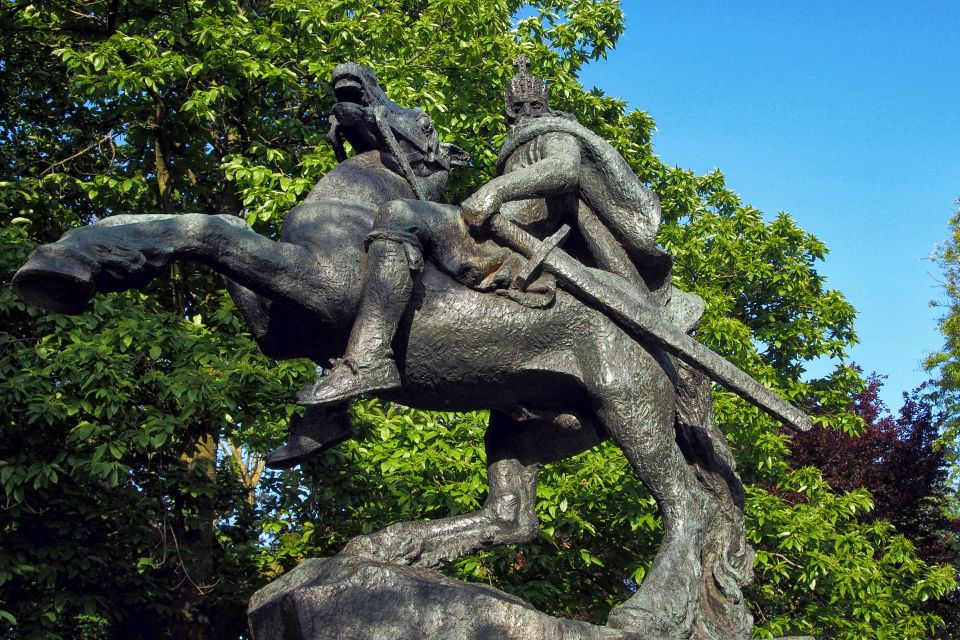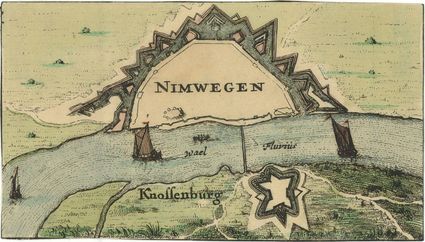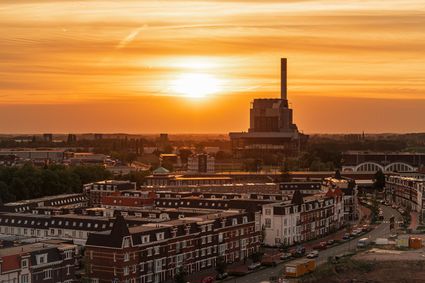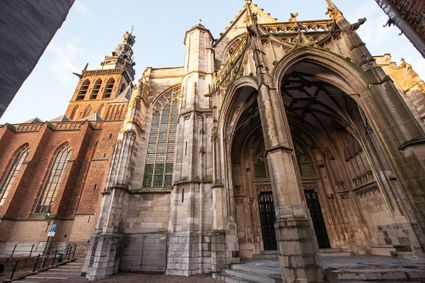Charlemagne and his residence at the Valkhof
Nijmegen is bursting at the seams with historical stories, ranging from leading figures to ordinary people, from neighbourhoods to political events. The Canon of Nijmegen encompasses the most important stories about Nijmegen’s history. One of these stories tells the tale of the Frankish king Charlemagne. Three hundred years after the collapse of the Roman Empire, Charlemagne established his Western European empire, which stretched from the Pyrenees and central Italy in the South to Friesland and the Danish border in the North. At various places throughout his empire, Charlemagne built palaces for himself – and one of those places was Nijmegen.
777: building a palace
In 777, Charlemagne had a palace built in Nijmegen, on the site of the former Roman fort in what is presently the Valkhofpark. This palace consisted primarily of a residential building, but also had spaces for court personnel and soldiers: there could easily be a few hundred people at a time. A church or chapel was an integral part of this palace. The most important buildings were usually located inside a fortress. Outside, there were farms which had to provide the monarch and his retinue with food. In the case of Nijmegen, these were spread across the entire Realm of Nijmegen, including the Rijkswald between Nijmegen and Xanten because of its abundance of wildlife and trees. Right outside the palace, on the bank of the Waal river, was a small settlement, where merchants, boatmen, craftsmen, and farmers lived. Very little is known about their day-to-day lives.
800: crowned as emperor
In the Medieval period, monarchs were constantly travelling through their realms and moving from one place to another with their retinue. They would stay in one spot for a couple of weeks to discuss governmental matters with counts, soldiers, civil servants, and clergymen from the surrounding area. Besides Aachen, Nijmegen was one of Charlemagne’s favourite places to stay; however, he travelled far and wide, waging war against the Saxons in the East, the Saracens in Spain, and subduing the Empire of the Lombards. In 800, he was crowned emperor by the pope in Rome, who considered him a successor to the Western Roman emperors.
 The statue of Charlemagne in the park at the centre of the Keizer Karelplein, made by Albert Polydorus Termote. The statue was unveiled in 1962.
The statue of Charlemagne in the park at the centre of the Keizer Karelplein, made by Albert Polydorus Termote. The statue was unveiled in 1962.
Louis the Pious, son and successor of Charlemagne, still held regular meetings at the palace in Nijmegen. After his death, the Empire was divided among his three sons. Nijmegen and the rest of what is presently the Netherlands eventually became part of the East Frankish Empire, which would soon be called “Germany.” In the Medieval period, Germany elected their kings, who had inherited the right to the imperial title from Charlemagne. After their election, they had to travel to Rome to be crowned emperor by the pope. For the period of time that the king wasn’t an emperor, he bore the title of “King of the Romans.”
880: looting and arson
Royal palaces tended to attract the Normans, who raided the areas along the North Sea from the ninth century onwards. Not only did they target trading cities like Dorestad, but also other towns where they expected to find a rich loot. In the autumn of 880, after plundering along the Rhine, the Normans decided to set up camp for the winter at the palace of Nijmegen. They left in the spring of 881, but only after they burned down the buildings at the Valkhof. Because of this, there are no remains of Charlemagne’s palace in Nijmegen and we don’t know what it might have looked like. The palace was rebuilt after the Normans departed.
Immerse yourself in the rich history of the oldest city in the Netherlands, because Nijmegen has a lot of stories to tell you. Curious? You can read all about it in this historical timeline.



